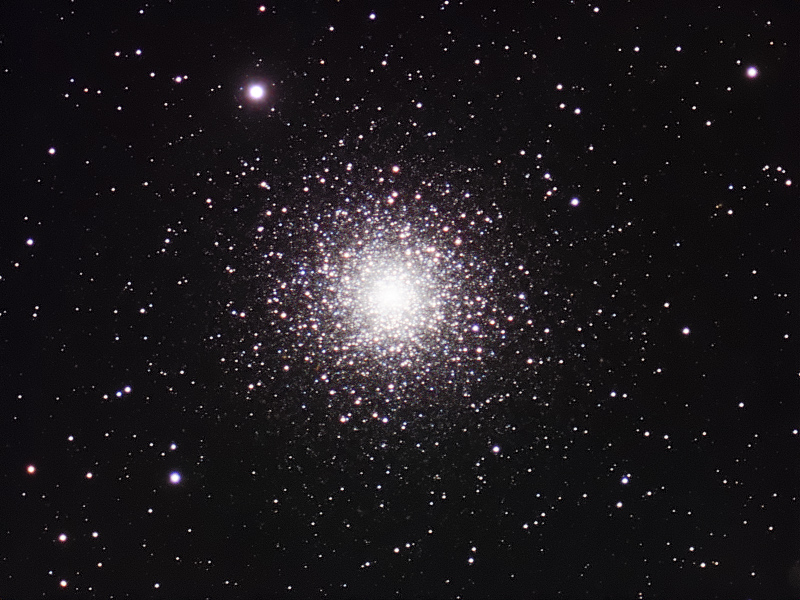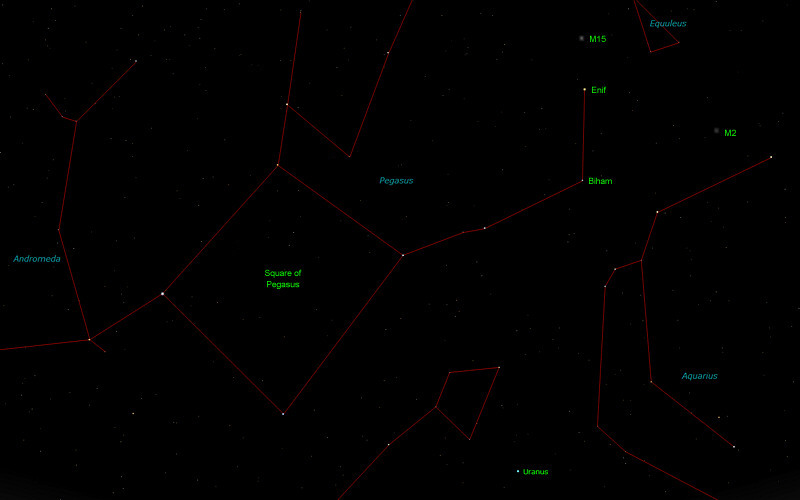 |
|
Messier 15: Globular
Cluster |
Constellation: Pegasus |
|
|
|
|
Telescope: 6" F/12
Refractor, ST-2000XCM CCD Camera |
Date: August 24th, 2009 |
|
|
|
|
Subexposures: 20 minutes
x 7 |
Total Exposure Time: 2
Hours, 20 minutes |
|
|
|
|
Distance: Approximately
30,000 Light-years |
|
|
|
|
 |
To find M15, first find the
"Square of Pegasus", then work your way to the bright star Enif, which is
reddish in color. Extend a line from Biham, the star below Enif,
through Enif and look about 1/2 the distance between those two stars above
Enif. In binoculars, M15 is forms a triangle with two faint stars.
If you're successful with M15, try spotting M2, which forms an isosceles
triangle with Enif and Biham.
Finally, you might look below
the circlet of Pisces for the planet Uranus. Binoculars will easily
show it, though it will look like a faint star. On really dark
nights you may be able to spot it with the naked eye. You can watch
the planet move slowly through the star field in the coming months.
With a 3" or 4" telescope, try using a power between 100x and 200x to show
the tiny disk of the planet.
Clicking on the finder chart
above will take you to a printable black-stars-on-white-background finder
chart.
|